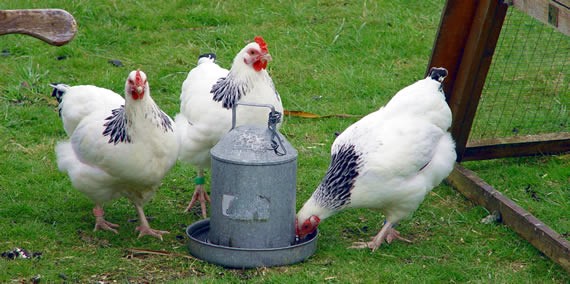In the "olden days", hens may have been fed on scraps, but if you want decent egg production, you must feed a good, balanced diet. For most of us, that means a proprietary feed. As with houses, there are lots of poultry feeds on the market, many aimed specifically at smallholders.
Organic and GM-free feeds are available, and a layer pellet containing the poultry wormer “Flubenvet” has recently become available.
Pellets and mash
Layer pellets are easiest to feed, either from a hopper or scattered on the ground. However, feeding on the ground can be wasteful and encourage vermin and wild birds if not all cleared up; with a hopper, feed can be available on an ad-lib basis and, if you place it in a sheltered area, it is protected from weather and wild birds.
Layer mash, which is basically powdered pellets, is also available but it tends to get damp, sour and lumpy. Mash is usually fed in intensive systems so that the hens take longer to feed and have less time for unsavoury pursuits such as feather pecking.
Water for poultry
Poultry must always have access to fresh, clean water and they drink a surprising amount of water, especially on hot days. Drinkers made from plastic, galvanised metal or glass (not a great idea!) are available but hens seem equally happy drinking from puddles, the birdbath, the sheep trough or just about any 'natural' source. However, the blue-green algae which forms on stagnant water can be fatal, so keep hens away from it.
In extreme weather conditions, either hot or cold, water may need attention several times a day. Hens don’t like hot water, so in icy weather, you will have to break the ice during the day. Empty drinkers at night, so that they don’t freeze solid by morning – better than spending ten minutes in the morning trying to break them open.

No comments:
Post a Comment